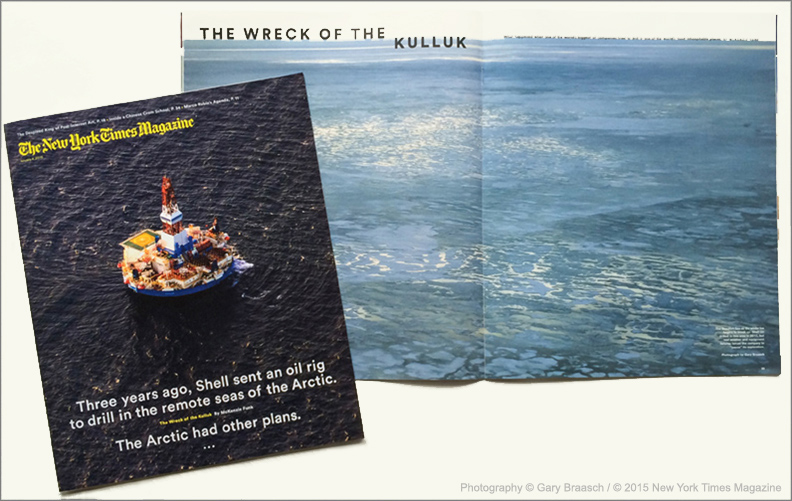Shell Drill Rig Offshore Alaska -- first photographs.
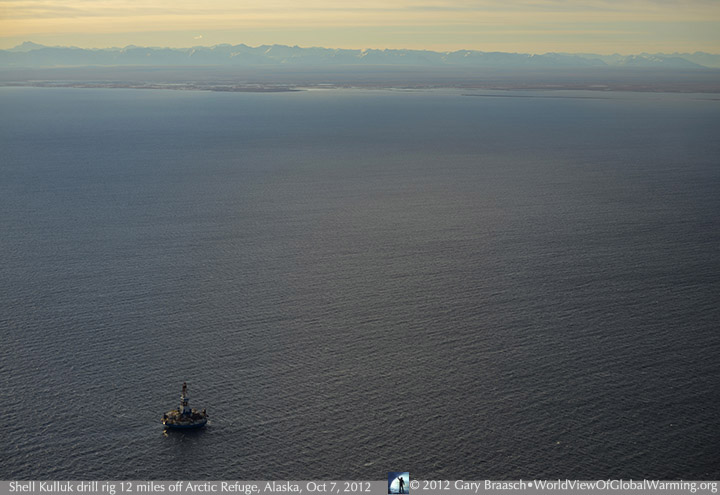
The first aerial photos of the Royal Dutch Shell floating oil drilling unit, Kulluk, in the Beaufort Sea of Alaska as it prepared to begin initial work on an exploratory oil well beneath the Arctic Ocean floor, were made by Gary Braasch on October 7, 2012. The drill rig site is only 12 miles offshore of the western boundary of the Arctic National Wildlife Refuge, which can be seen in the photographs. The Refuge has been protected from land oil drilling through many years of Congressional battles. The 160 foot high Kulluk rig was anchored above a Federal oil prospect explored in the 1980s and 90s by other oil companies, to which Shell bought the rights. There has been no oil prospecting or drilling in these waters since then.
These photographs were immediately published in The Daily Climate and had wide internet attention. Later in that October, Shell withdrew this rig and another that had been in the Chukchi Sea west of Alaska, but wrecked the Kulluk enroute south. After a two year delay, Shell has once again said it wants to drill for oil in the Arctic Ocean. On January 4, 2015 the New York Times Magazine, print circulation almost 4 million, published a detailed story by McKenzie Funk about Shell’s mistakes and plans, “The Wreck of the Kulluk.” The cover image of the Kulluk and a double page spread of an icy Arctic Ocean were byGary Braasch.
After repeated self-inflicted failures to gain Federal permits for deep drilling at this and another site and a series of accidents with two drill rigs, Shell said in February 2014 it was delaying plans for offshore drilling. The risky prospects for drilling for oil in the Arctic also caused another international oil company, Conoco-Phillips, to suspend plans for 2014 work in the Chukchi Sea west of Alaska, near to where Royal Dutch Shell had a second rig in 2012. But in late 2014, Shell once again applied to drill off Alaska, having scrapped the Kulluk but refitted two other drill ships for work in the Chukchi Sea west of Alaska. In January 2015, President Obama and the Interior Department said the government would put part of the Arctic Ocean off limits to drilling as part of a new five-year oil drilling area leasing plan (and also protect the Arctic Refuge from land drilling). The ocean areas include subsistence whaling and sealing areas and habitat areas for walrus and other Arctic creatures. (see map below). It is still to be seen how these new restrictions will affect Shell’s work on purchased leases in the area.
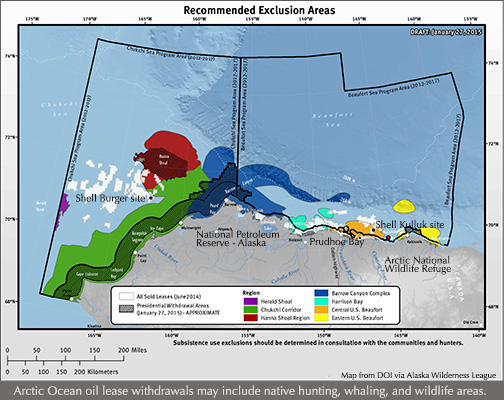
After the drilling season in 2012, Shell lost control of the Kulluk while it was being towed south near Kodiak Island and it ran aground, eroding confidence that the company could drill without major spill or environmental damage. According to company spokespeople the Kulluk's hull was damaged when it crashed onto rocks south of Kodiak Island. Seawater also caused electrical damage, said Shell. The company said their other vessel, the Noble Discoverer, required maintenance for it to be seaworthy and pass Coast Guard inspections. Earlier in 2012 the Discoverer apparently dragged anchors while at Dutch Harbor in the Aleutians, and ended up on mudflats near the shore. By early 2014 Shell said it was towing both vessels to repair facilities in Japan. According to reports later in 2014, the Discoverer has been refitted but the Kulluk was being dismantled as scrap.
The U. S. Interior Department has not yet issued final permits for sinking a drill bit into Arctic Ocean strata which may hold commercial quantities of oil. Permits were withheld from Shell in 2012 because it failed to meet a number of requirements for pollution control and spill response. A group of 10 environmental and native NGOs has engaged the Interior Department in a series of lawsuits charging that oil spills in the Arctic will be impossible to control and clean up, and that air pollution from the equipment will harmfully increase. Shell was fined more than $1 million for numerous violations of EPA air pollution permits by its rigs in the Arctic Ocean. And in December 2014, the Noble Drilling LLC, owner/operator of the Discoverer, plead guilty to eight felony violations of environmental and safety regulations and will pay more than $12 million in fines.
The Arctic coast and Ocean are rich with migrating birds, sea life and marine mammals, and the source of natives' culture and food.
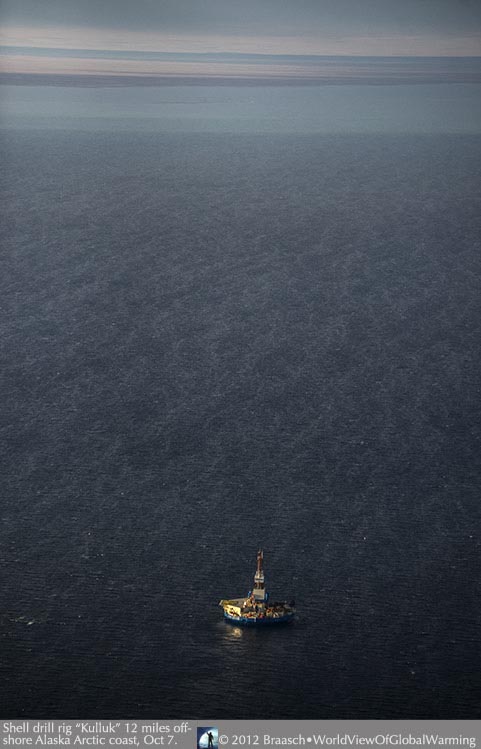
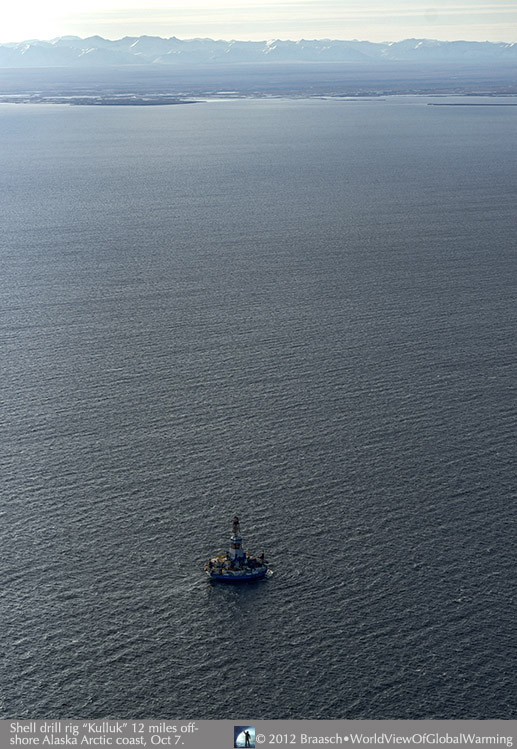
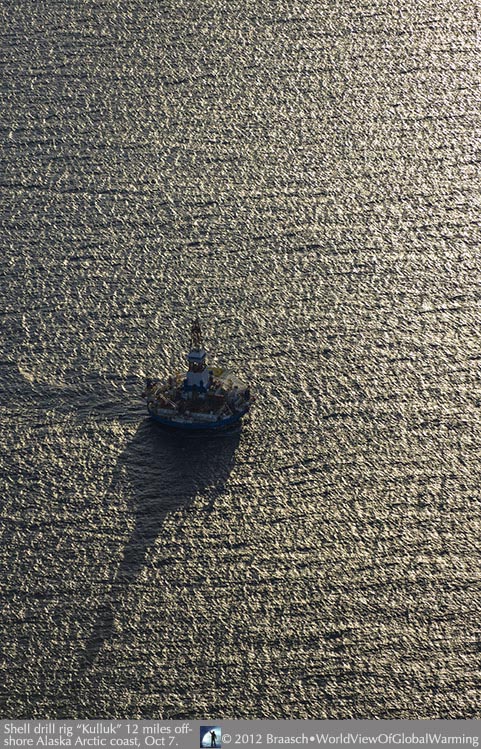
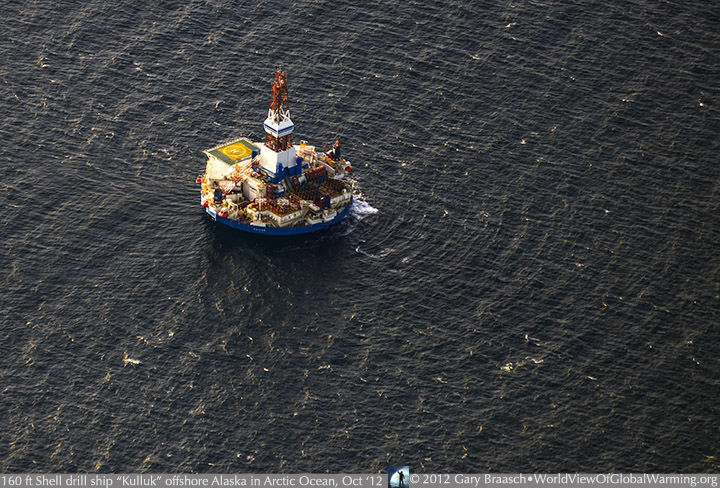
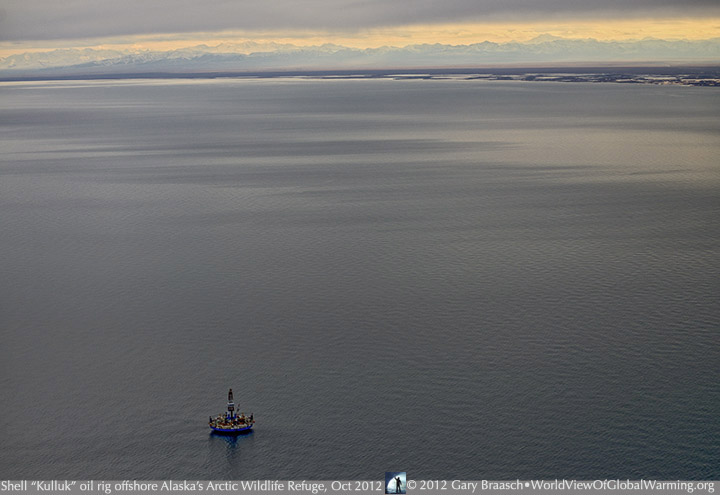
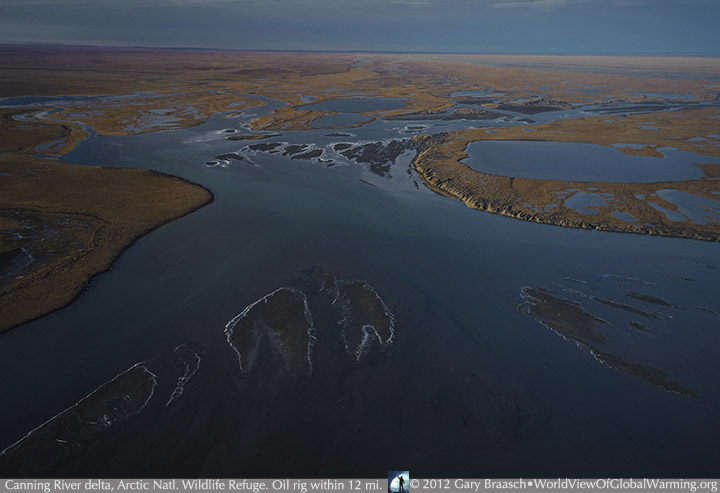
Mouth and delta of the Canning River, which is the western boundary of the Arctic National Wildlife Refuge, Alaska. Fall colors and very thin rims of ice emphasize the landscape on Octover 7, 2012. This river flows from the Brooks Range. No oil drilling has been permitted inside the Refuge. The oil industry has one producing well site 20 miles to the west along the coast at Badami, and a site is being prepared at Thomson Point about 6 miles from this western edge of the Arctic Refuge. The new Shell Arctic Ocean drilling site is about 12 miles offshore.
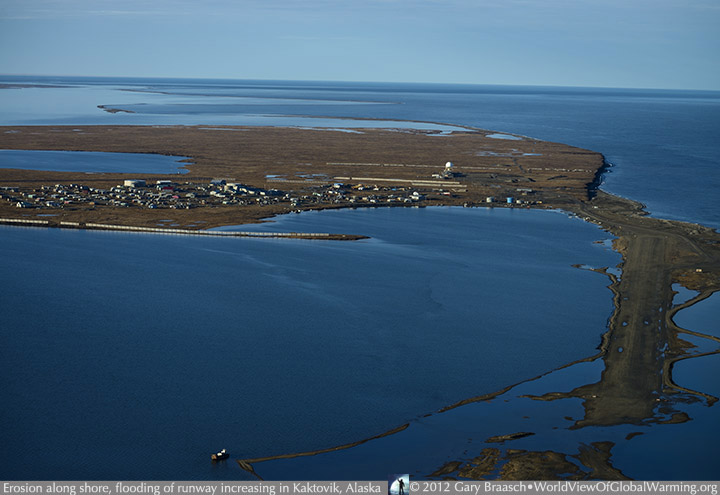
The native Inupiat village of Kaktovik, on the edge of the Arctic Ocean on Barter Island. The settlement of 240 mostly native Americans is an enclave on the central coast of the Arctic National Wildlife Refuge. The location is a traditional hunting and whaling site for Inupiats. Recent sea level rise and stronger wave action due to lower Arctic sea ice cover have caused great erosion along the shore and severe flooding that has sometimes closed the crucial runway.
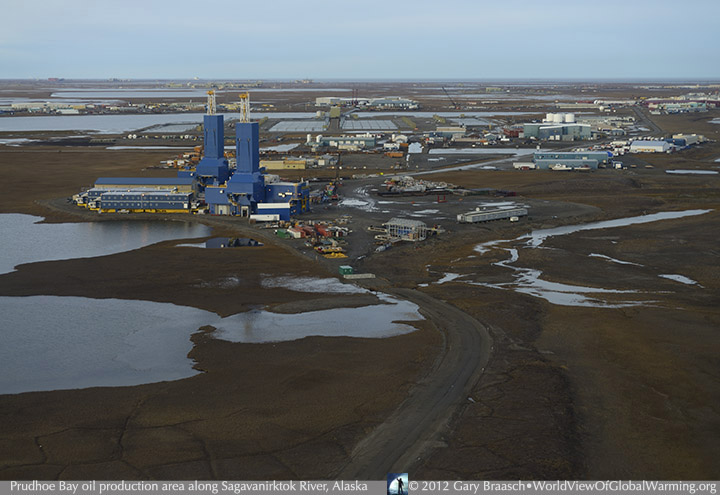
View of a production area of Prudhoe Bay, the industrial petroleum extraction center on the central coast of Alaska's Arctic Ocean. This is the largest oil field in North America. Oil was first drilled here in the 1960s and current major owners are BP, Exxon and Conoco-Phillips. Prudhoe Bay is the beginning point for the Trans Alaska Oil Pipeline, terminating in Valdez, Alaska. Production areas extend across 50 miles of tundra, from the Colville River in the west to the Badami wells about 20 miles to the east of Prudhoe Bay itself. There has been no offshore oil production in Alaska. The Royal Dutch Shell floating drill rigs arrived offshore Alaska in 2012, but were only permitted to do preliminary work. See article references at top of page about ultimate failure of 2012 season for Shell.
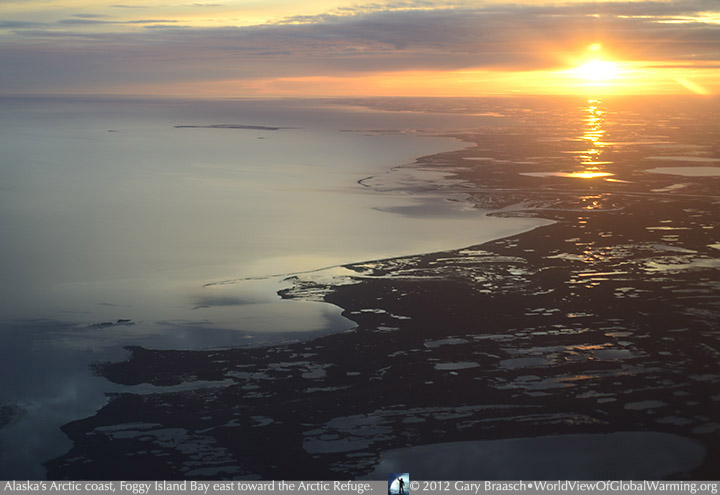
Dawn over the Alaska Arctic Ocean coast, with Foggy Island Bay in foreground. Prudhoe Bay is just to the west out of view, and 40 miles out to the east is the Arctic National Wildlife Refuge. The oil industry has one producing well site on this part of the coast, at Badami, and a site is being prepared at Thomson Point about 6 miles from the western boundary of the Arctic Refuge. No oil drilling has been permitted inside the Refuge.
COPYRIGHT NOTICE:
Photography and text Copyright © 2005 - 2017 (and before) Gary Braasch All rights reserved. Use of photographs in any manner without permission is prohibited by US copyright law. Photography is available for license to publications and other uses. Please contact requestinformation@worldviewofglobalwarming.org. View more of Gary Braasch's photography here.



